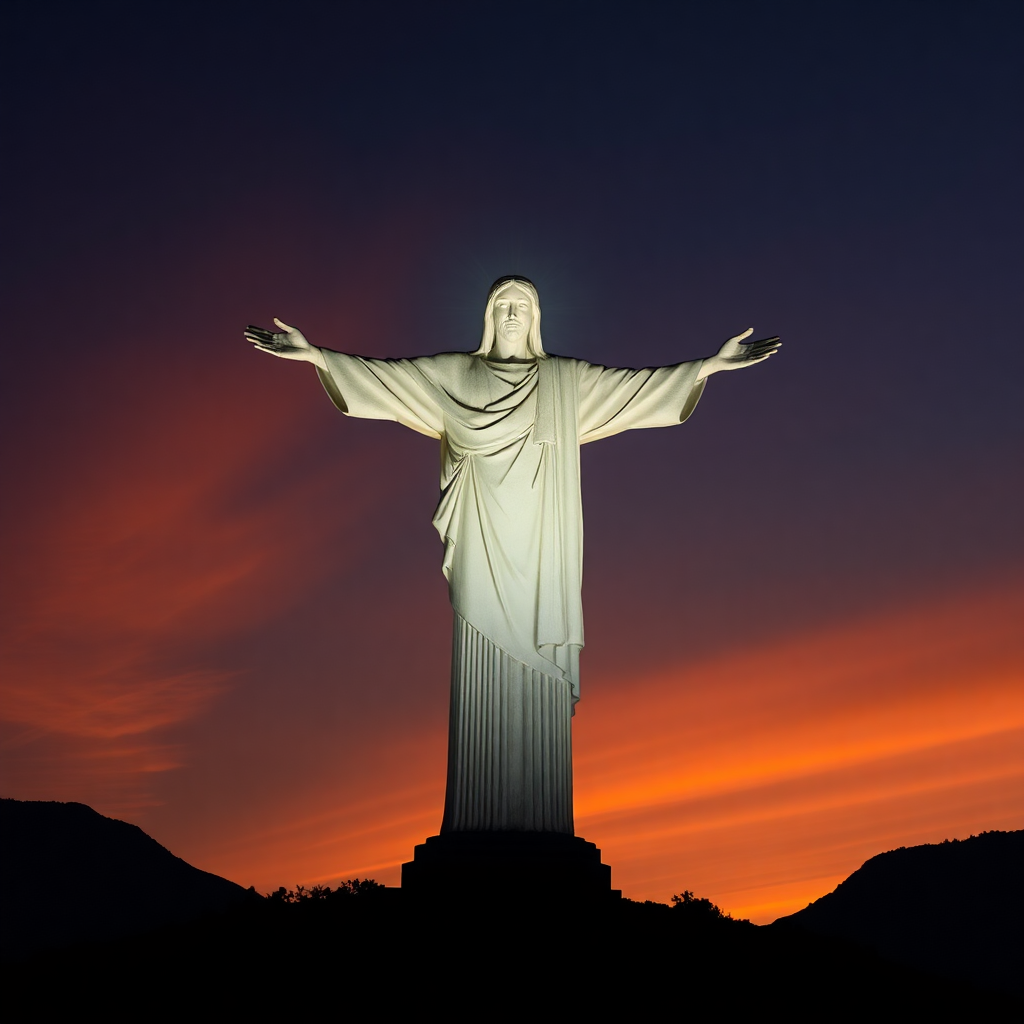Christ the Redeemer: Brazil's Iconic Guardian of Rio
The statue's pose, with arms spread wide in welcome, represents Christ's embrace of all humanity, reflecting the inclusive and warm spirit that Brazilians are known for worldwide.
Perched majestically atop Corcovado Mountain, Christ the Redeemer stands as one of the world's most recognizable landmarks and Brazil's most beloved symbol. This colossal Art Deco statue of Jesus Christ, with arms outstretched in a gesture of blessing and protection, has watched over the bustling metropolis of Rio de Janeiro for nearly a century. More than just a tourist attraction, Cristo Redentor represents the spiritual heart of Brazil, embodying the nation's deep Catholic faith while serving as a beacon of hope and unity for millions of people around the globe.
Historical Origins: From Dream to Divine Reality
The idea for Christ the Redeemer emerged in the 1850s when Catholic priest Pedro Maria Boss first suggested placing a Christian monument on Corcovado Mountain. However, it wasn't until the 1920s that the dream began to take concrete form. The Catholic Circle of Rio organized a campaign called "Monument Week" to raise funds for the project, with donations coming from Catholics across Brazil and around the world. The initiative gained momentum as Brazil approached its centennial of independence in 1922, making the statue both a religious monument and a symbol of national pride. The Brazilian government officially endorsed the project, and construction began in earnest under the guidance of engineer Heitor da Silva Costa.

Architectural Marvel: Engineering the Impossible
Creating Christ the Redeemer presented enormous engineering challenges that required innovative solutions and international collaboration. The statue was designed by Brazilian engineer Heitor da Silva Costa in partnership with French sculptor Paul Landowski, who crafted the head and hands in his Paris workshop. The statue stands 98 feet tall, with an additional 26-foot pedestal, while the outstretched arms span an impressive 92 feet. The monument is constructed primarily of reinforced concrete and soapstone, chosen for its durability and resistance to weathering. The soapstone pieces were carefully shaped and fitted by skilled craftsmen, creating the statue's smooth, luminous surface that catches and reflects the tropical sunlight beautifully.
Construction Challenges: Building in the Clouds
The construction of Christ the Redeemer, which took place from 1922 to 1931, was an extraordinary feat of logistics and determination. Workers had to transport massive amounts of materials up the steep, 2,300-foot mountain using a cog railway that had been built in the 1880s. The statue was constructed in pieces, with components being hauled up the mountain and assembled on-site. Weather conditions posed constant challenges, as Corcovado Mountain is frequently shrouded in clouds and subject to strong winds and heavy rains. Despite these obstacles, Brazilian and European craftsmen worked tirelessly to complete the project, often laboring under difficult conditions to bring this monumental vision to life.
Cultural and Religious Significance
Christ the Redeemer serves as far more than an architectural achievement; it stands as a powerful symbol of Brazil's Catholic heritage and spiritual identity. The statue's pose, with arms spread wide in welcome, represents Christ's embrace of all humanity, reflecting the inclusive and warm spirit that Brazilians are known for worldwide. For the predominantly Catholic population of Brazil, the monument serves as a constant reminder of their faith and divine protection over their nation. The statue has become a pilgrimage destination for Christians from around the world, while also serving as a unifying symbol that transcends religious boundaries, representing peace, love, and hope for all who gaze upon it.
Modern Recognition and Global Impact
In 2007, Christ the Redeemer was named one of the New Seven Wonders of the World through a global voting campaign, cementing its status as one of humanity's greatest achievements. This recognition brought even greater international attention to the statue and to Rio de Janeiro as a whole. The monument has appeared in countless films, television shows, and photographs, becoming synonymous with Brazil itself in popular culture. During major events like the 2014 FIFA World Cup and the 2016 Summer Olympics, both held in Brazil, Christ the Redeemer served as a backdrop for celebrations and ceremonies, showcasing Brazilian culture to billions of viewers worldwide.
Tourism and Economic Impact
The statue attracts nearly two million visitors annually, making it one of Brazil's most important tourist destinations and a significant contributor to Rio's economy. Visitors can reach the summit via the historic cog train, van services, or hiking trails, each offering unique perspectives of the statue and the breathtaking views of Rio de Janeiro below. The tourism industry surrounding Christ the Redeemer supports thousands of jobs and generates substantial revenue for local businesses, hotels, restaurants, and tour operators. The statue's popularity has also sparked development in the surrounding Tijuca National Park, one of the world's largest urban forests, creating additional opportunities for eco-tourism and outdoor recreation.
Conservation and Maintenance Efforts
Maintaining Christ the Redeemer requires ongoing conservation efforts to protect it from the elements and the effects of time. The statue faces constant exposure to tropical weather, including intense sunlight, heavy rains, and occasional lightning strikes. Over the decades, the monument has undergone several restoration projects to repair weather damage, update its lighting system, and strengthen its structural integrity. Modern conservation techniques include regular cleaning of the soapstone surface, repair of cracks and chips, and installation of lightning protection systems. These efforts ensure that future generations will be able to experience the majesty of this iconic landmark.
Conclusion: An Eternal Guardian
As it continues to watch over Rio de Janeiro with outstretched arms, Christ the Redeemer reminds us of the enduring power of symbols to unite, inspire, and uplift the human spirit. Whether viewed as a religious icon, architectural marvel, or cultural treasure, this magnificent statue will undoubtedly continue to capture hearts and imaginations for centuries to come, serving as Brazil's eternal guardian and gift to the world.